-
1 of 253523 objects
The Sovereign's Ring 1831
Gold, sapphire, rubies, diamonds, silver | 2.8 cm (whole object) | RCIN 31720
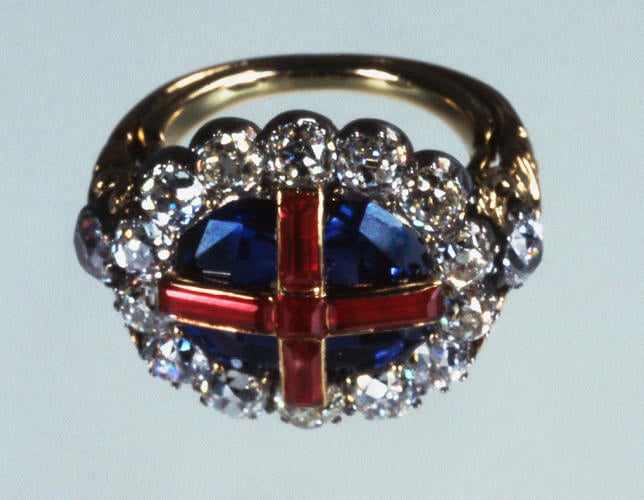
Rundell Bridge & Rundell
The Sovereign's Ring 1831
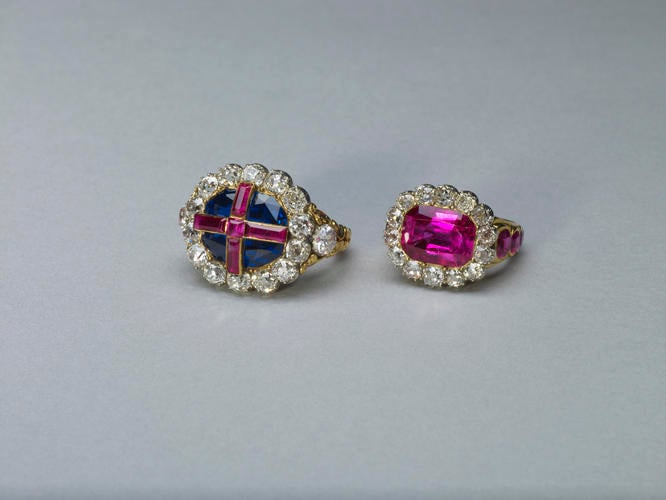
Rundell Bridge & Rundell
The Sovereign's Ring 1831

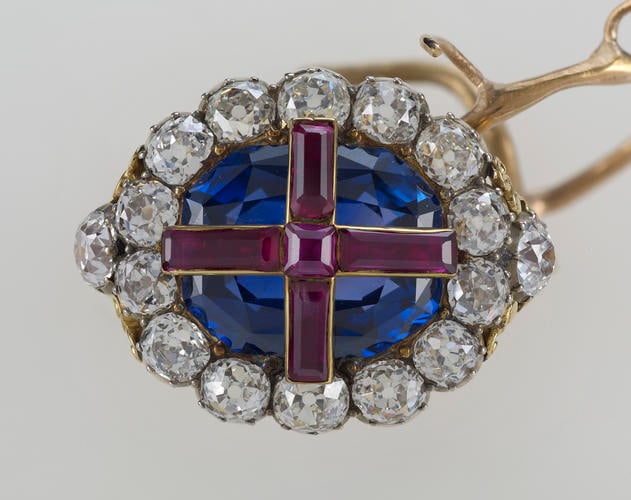


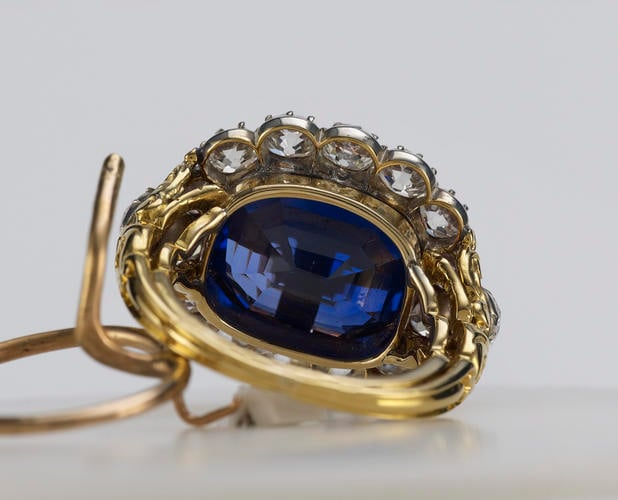
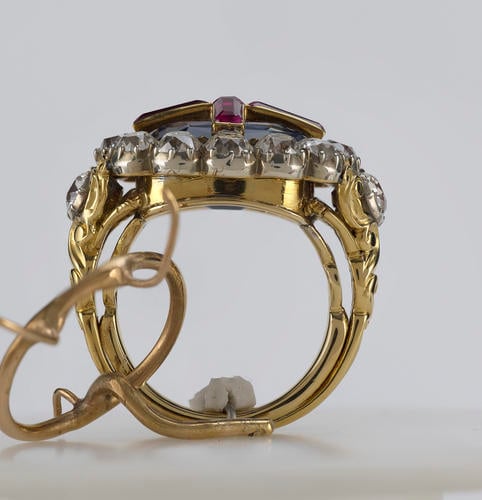
-
The ring is composed of a mixed-cut octagonal sapphire in a gold setting overlaid with four rectangular-cut and one square-cut rubies, butted together in a gold strip setting to form a cross, with a border of fourteen cushion-shaped diamonds and a diamond on each shoulder, with a gold hoop. During the coronation ceremony the ring is placed on the fourth finger of the sovereign by the archbishop, as a symbol of 'kingly dignity'. Since the thirteenth century it has been traditional to include a ruby as the principal stone in the ring. The presentation of the ring forms part of the investiture of the coronation, which is preceded by the anointing with holy oil, and is followed by the crowning itself. This ring was made for the coronation of William IV in 1831. Like all coronation rings until the twentieth century, each monarch had a newly-made ring which was not kept with the regalia but with the personal jewellery of the sovereign. William IV left this coronation ring to his widow, Queen Adelaide, who in turn bequeathed it to Queen Victoria, together with her consort's ring. Queen Victoria left both of these, and her own coronation ring to the Crown in 1901, and all three were deposited in the Tower of London, with the other Crown Jewels, by George V in March 1919. All sovereigns from Edward VII onwards have used William IV's ring at their coronations.
Provenance
Supplied for the coronation of William IV in 1831 by the royal goldsmiths, Rundell, Bridge & Rundell.
-
Creator(s)
(jeweller)Acquirer(s)
-
Medium and techniques
Gold, sapphire, rubies, diamonds, silver
Measurements
2.8 cm (whole object)
16.89 g (Weight) (whole object)
Alternative title(s)
King William IV's Coronation ring